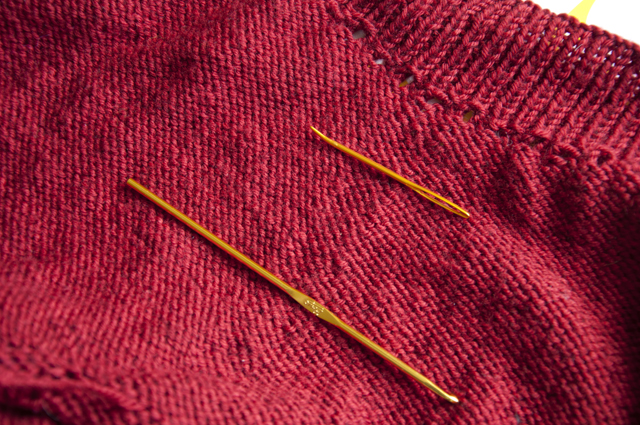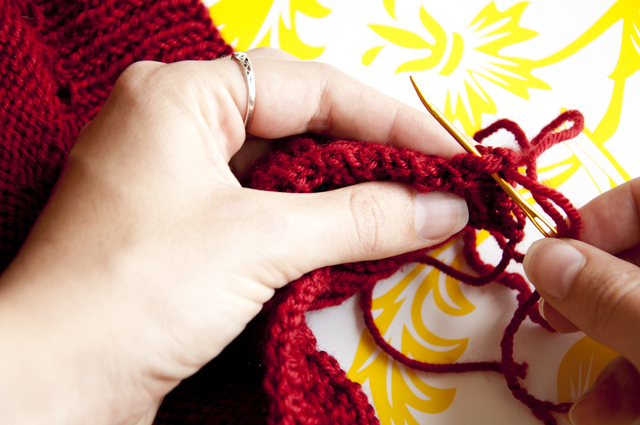The last parts of making a sweater are always my least favorite because they’re not actual knitting. Weaving in ends and attaching buttons are not super fun in my opinion. You have my permission to grumble at your project while you do this. I always do.

I use two different tools to weave in my ends. I typically favor the crochet hook. It’s slower to do the actual weaving with it, but you don’t have to fiddle with threading yarn through a needle, and it’s great if you didn’t leave yourself long enough ends. The yarn needle is the more traditional way to go about doing things. The weaving process goes faster with this guy, but I dislike threading the needle, so I generally don’t use if for projects with a lot of ends to weave in.

With seamless projects, sometimes it can be hard to figure out where to hide the ends, but it’s easy on Myrna. I weave all of my ends into the selvage stitches that end up on the wrong side after you pick up stitches. Like seams, these selvage stitches are the perfect place to hide your ends.
Leave a Reply to Jesse Cancel reply